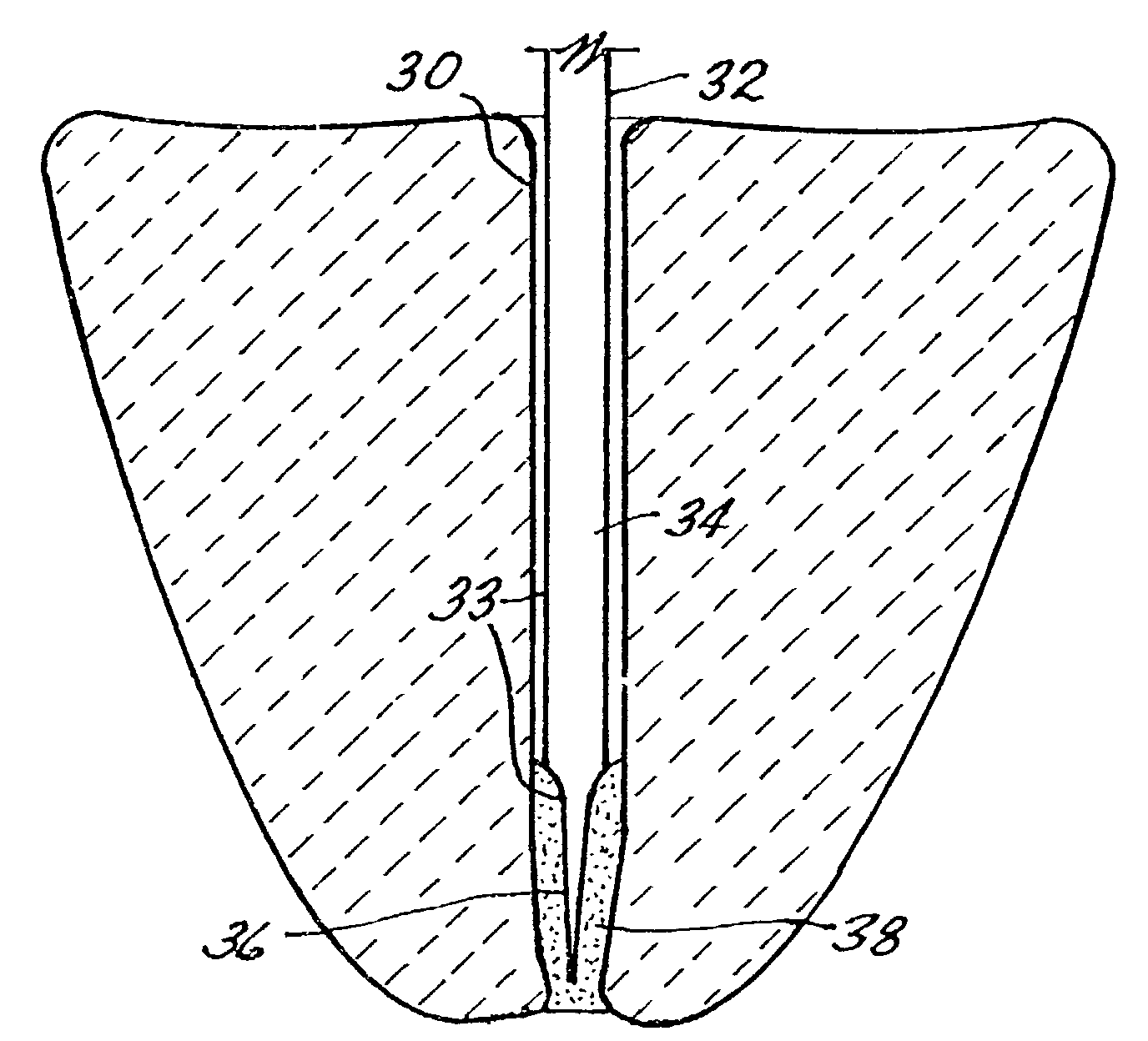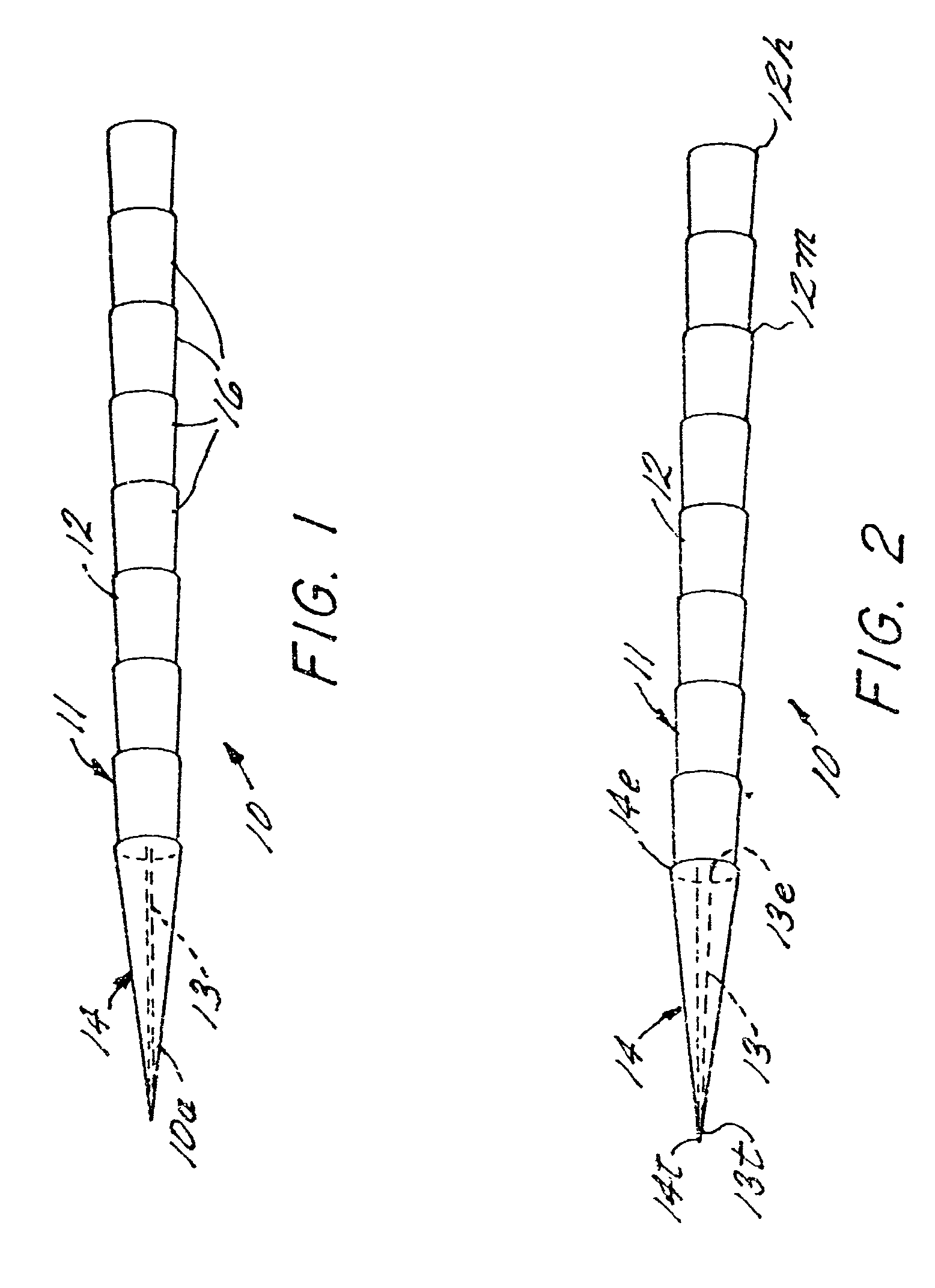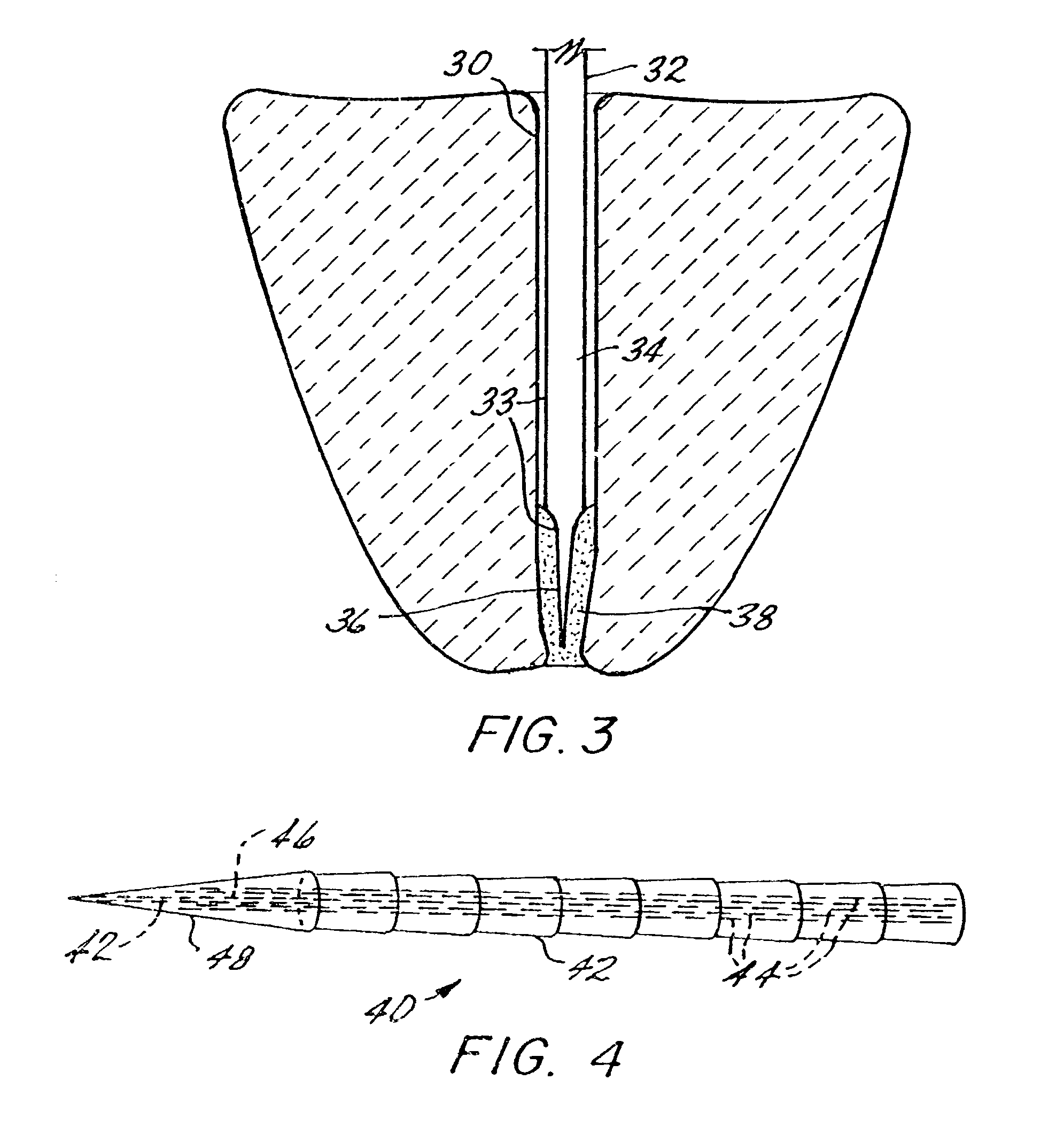Endodontic post system
a post system and endodontic technology, applied in the field of endodontic post system, can solve the problems of no device currently available to allow a doctor, difficult removal of gutta percha, and a dentist's removal problem, so as to prevent subsequent root fractures and strengthen the tooth
- Summary
- Abstract
- Description
- Claims
- Application Information
AI Technical Summary
Benefits of technology
Problems solved by technology
Method used
Image
Examples
Embodiment Construction
[0016]As will be appreciated, the present invention provides a combination endodontic post and filler cone in a single unit. Reference is made to FIGS. 1 and 2 which show a post unit 10 comprising a post section 11 and a cone or tip section 14. Tip section 14 comprises a flexible rod or cone of biocompatible material for filling the apex of the canal. The filling material is typically a thermoplastic, chemo-plastic (i.e., may be softened by chemicals), resinous or similar polymeric material, such as gutta percha and is attached to post section 11 at the apical end 10a. Other examples of thermoplastic materials include but are not limited to polyacrylates such as polymethyl methacrylate, polyhydroxy ethyl methacrylate, and hydroxy ethyl methacrylate (HEMA), polyurethanes, polypropylene, polyethylene, polyamides, fluoropolymers such as Teflon® PTFE and Teflon® PFA, polyesters such as polylactic acid, glycolide and polycaprolactone and their co-polymers, polyphosphazenes, polyanhydride...
PUM
 Login to View More
Login to View More Abstract
Description
Claims
Application Information
 Login to View More
Login to View More - R&D
- Intellectual Property
- Life Sciences
- Materials
- Tech Scout
- Unparalleled Data Quality
- Higher Quality Content
- 60% Fewer Hallucinations
Browse by: Latest US Patents, China's latest patents, Technical Efficacy Thesaurus, Application Domain, Technology Topic, Popular Technical Reports.
© 2025 PatSnap. All rights reserved.Legal|Privacy policy|Modern Slavery Act Transparency Statement|Sitemap|About US| Contact US: help@patsnap.com



